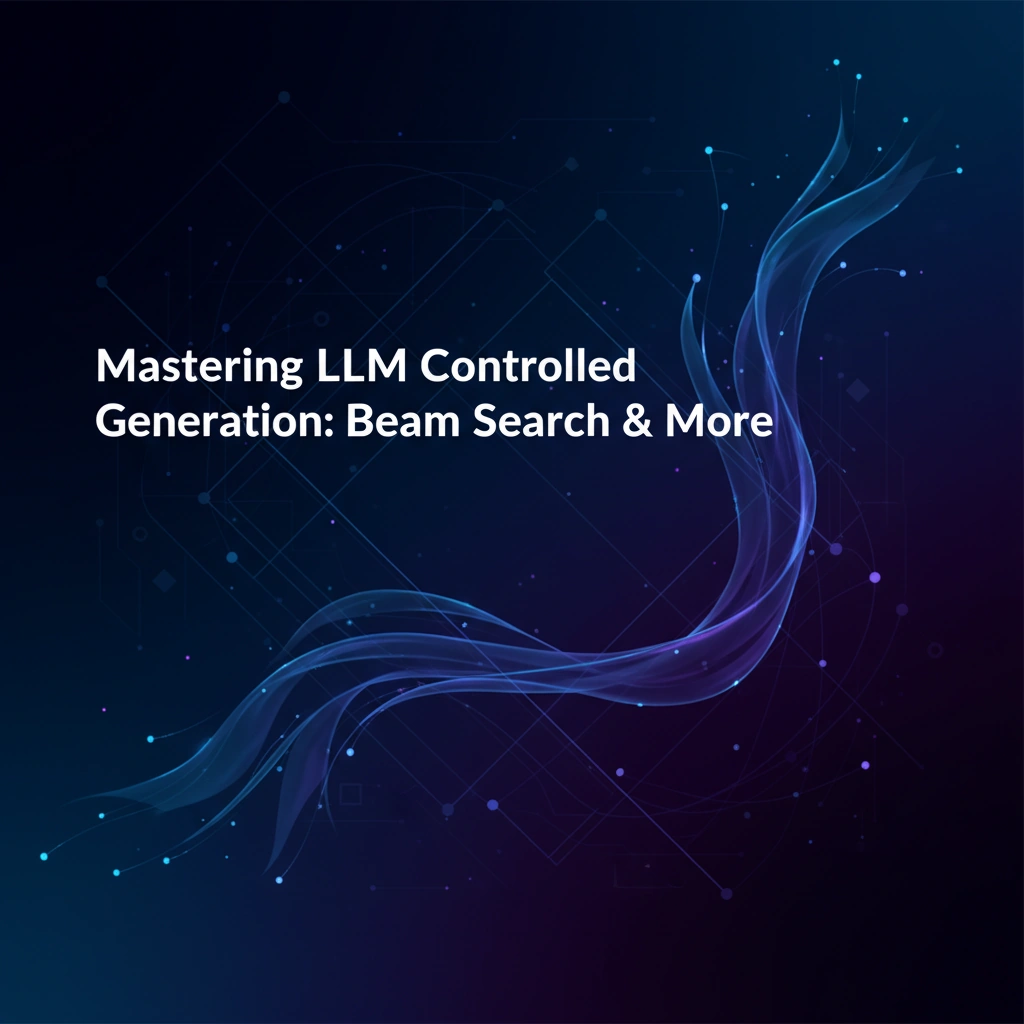Mastering LLM Controlled Generation: Beam Search & More
Deep dive into controlled generation techniques for LLM inference, from beam search to constrained decoding. Learn how these methods shape AI output quality, coherence, and computational efficiency in production systems.

Large language models have revolutionized AI text generation, but producing high-quality, coherent outputs requires more than just running inference. Controlled generation methods—the techniques that shape how LLMs produce text—are critical for balancing output quality, diversity, and computational efficiency.
Understanding these methods is essential for anyone working with AI systems that generate text, including applications that create synthetic media scripts, video captions, or conversational deepfake content.
The Foundation: Greedy Decoding vs. Sampling
At its core, LLM text generation is a sequential process where the model predicts one token at a time. The simplest approach, greedy decoding, always selects the highest-probability token at each step. While computationally efficient, this deterministic method often produces repetitive, unnatural text that lacks the variability found in human language.
Sampling methods introduce controlled randomness by treating the model's output as a probability distribution. Instead of always picking the top token, the system samples from this distribution, creating more diverse and natural-sounding outputs. However, pure random sampling can lead to incoherent results when low-probability tokens are selected.
Beam Search: Balancing Quality and Exploration
Beam search addresses greedy decoding's limitations by maintaining multiple candidate sequences ("beams") simultaneously. At each generation step, the algorithm keeps the top-k most probable sequences, expanding each by one token and retaining only the best candidates based on cumulative probability.
This approach explores multiple generation paths without the exponential complexity of examining all possibilities. Beam width—the number of sequences maintained—directly impacts quality and computational cost. Wider beams produce more thorough exploration but require more memory and processing time.
For AI video generation systems that need to produce coherent scene descriptions or dialogue, beam search helps maintain narrative consistency across longer sequences while avoiding the repetition common in greedy approaches.
Temperature Scaling and Top-K Sampling
Temperature scaling modifies the probability distribution before sampling. Lower temperatures (below 1.0) sharpen the distribution, making high-probability tokens more likely and producing more focused, predictable outputs. Higher temperatures flatten the distribution, increasing randomness and creativity.
Top-k sampling restricts sampling to only the k most probable tokens at each step, filtering out unlikely options that could derail coherence. This method prevents the model from selecting improbable words while maintaining diversity among reasonable choices.
Combining temperature scaling with top-k sampling provides fine-grained control over the creativity-coherence tradeoff—crucial when generating scripts for synthetic media where you need natural dialogue without nonsensical departures.
Nucleus Sampling (Top-P)
An evolution of top-k sampling, nucleus sampling (or top-p sampling) dynamically adjusts the candidate pool based on cumulative probability. Instead of a fixed number of tokens, it considers the smallest set of tokens whose cumulative probability exceeds a threshold p (typically 0.9 or 0.95).
This adaptive approach handles varying probability distributions more effectively. When the model is confident, the nucleus is small; when uncertainty is high, more tokens are considered. This flexibility makes nucleus sampling particularly effective for open-ended generation tasks.
Constrained Decoding for Structured Outputs
Constrained decoding enforces specific rules or formats during generation, ensuring outputs match required structures like JSON schemas, grammar rules, or domain-specific constraints. This is accomplished by masking invalid tokens at each step, limiting the model to only valid continuations.
For AI systems generating metadata for synthetic media—such as timestamps, speaker labels, or scene annotations—constrained decoding guarantees properly formatted outputs that integrate seamlessly with downstream processing pipelines.
Repetition Penalties and Length Control
Advanced controlled generation methods include repetition penalties that reduce the probability of recently generated tokens, preventing the monotonous loops that plague many generation systems. Similarly, length penalties adjust beam scores based on sequence length, preventing the bias toward shorter sequences inherent in probability-based scoring.
These techniques are essential for generating longer-form content like video narration scripts or extended dialogue sequences where maintaining variety and appropriate length is critical.
Practical Implications for Synthetic Media
These controlled generation methods directly impact synthetic media quality. When generating scripts for AI video systems, beam search with appropriate penalties ensures narrative coherence. When creating deepfake dialogue, temperature and nucleus sampling balance natural variation with believability. When producing structured metadata for content authentication systems, constrained decoding guarantees machine-readable formats.
Understanding these techniques empowers developers to tune LLM behavior for specific applications, optimizing the balance between creativity, coherence, computational cost, and format compliance that each use case demands.
Stay informed on AI video and digital authenticity. Follow Skrew AI News.



